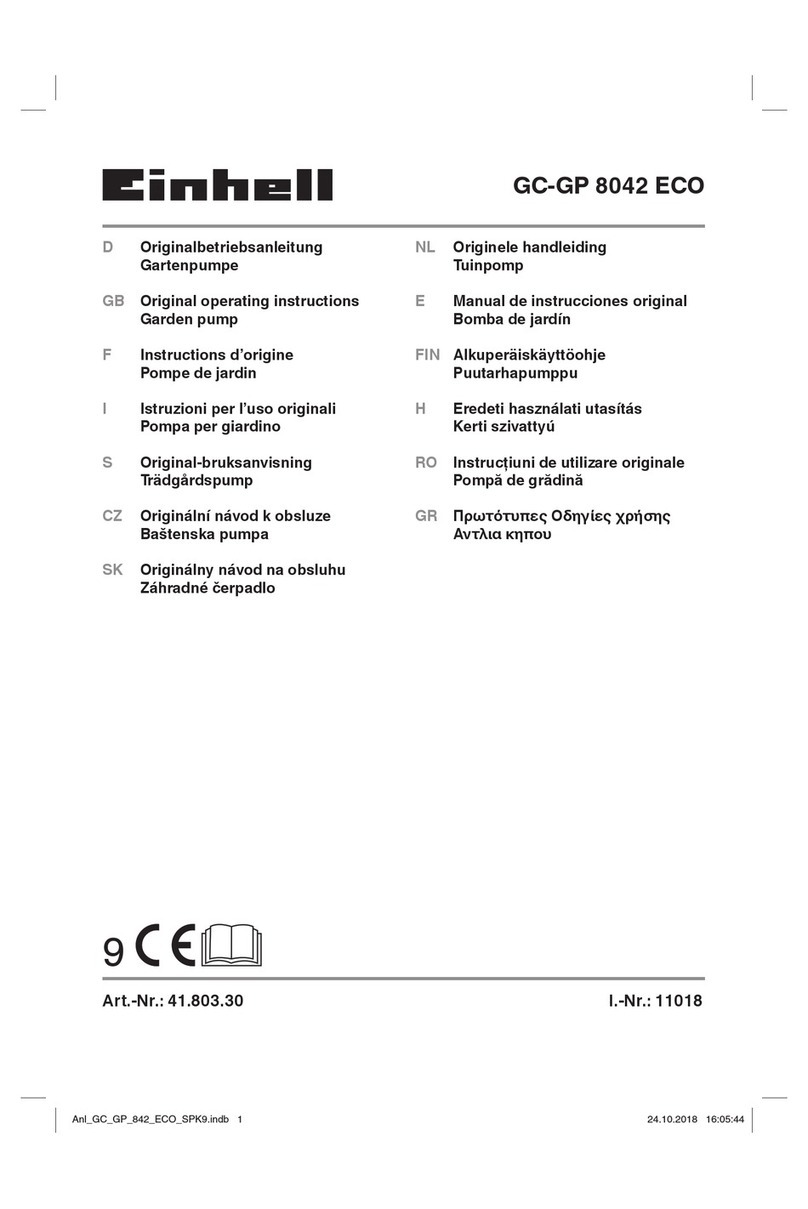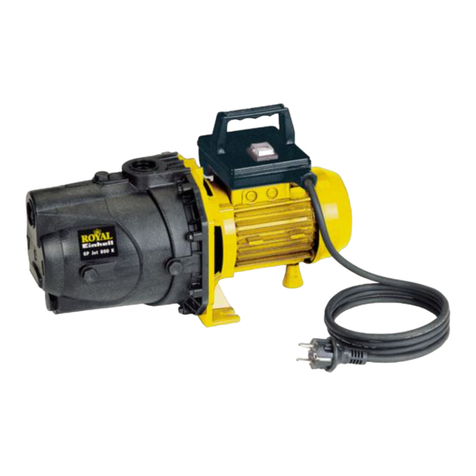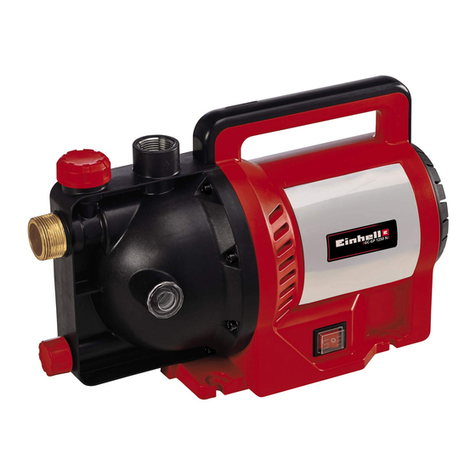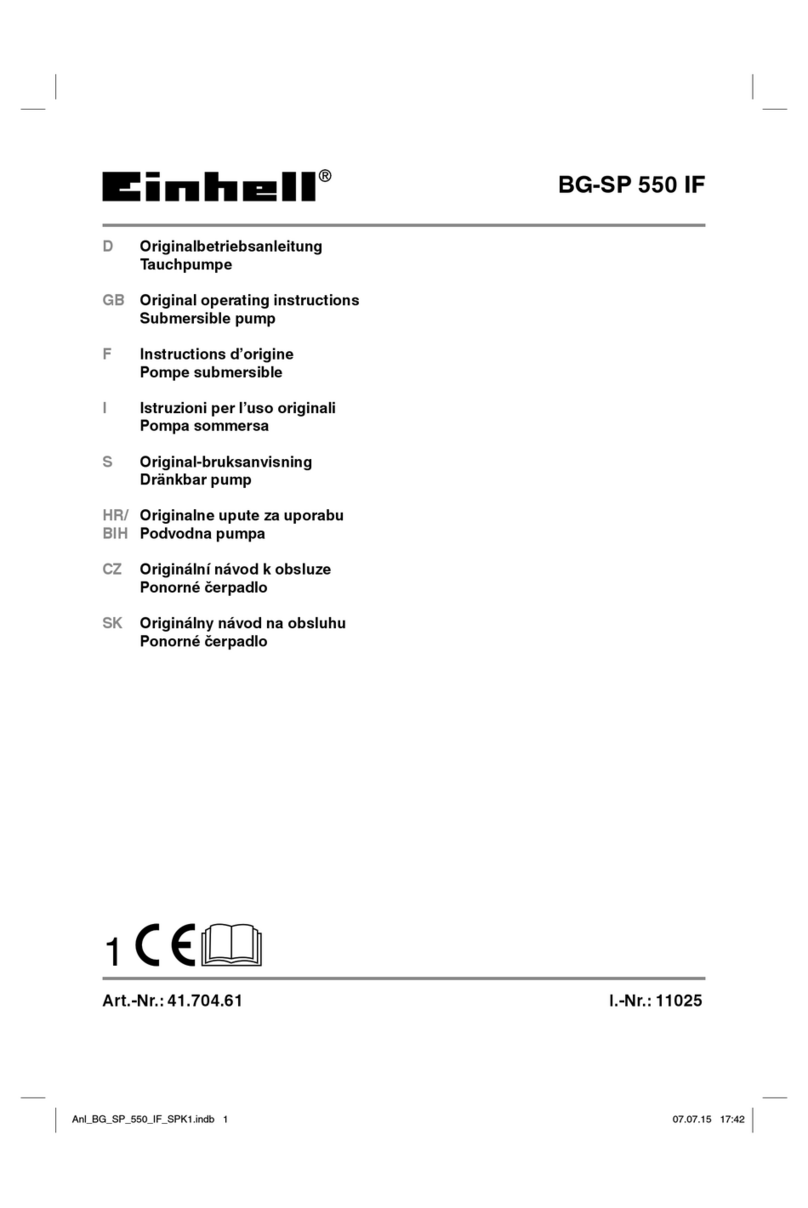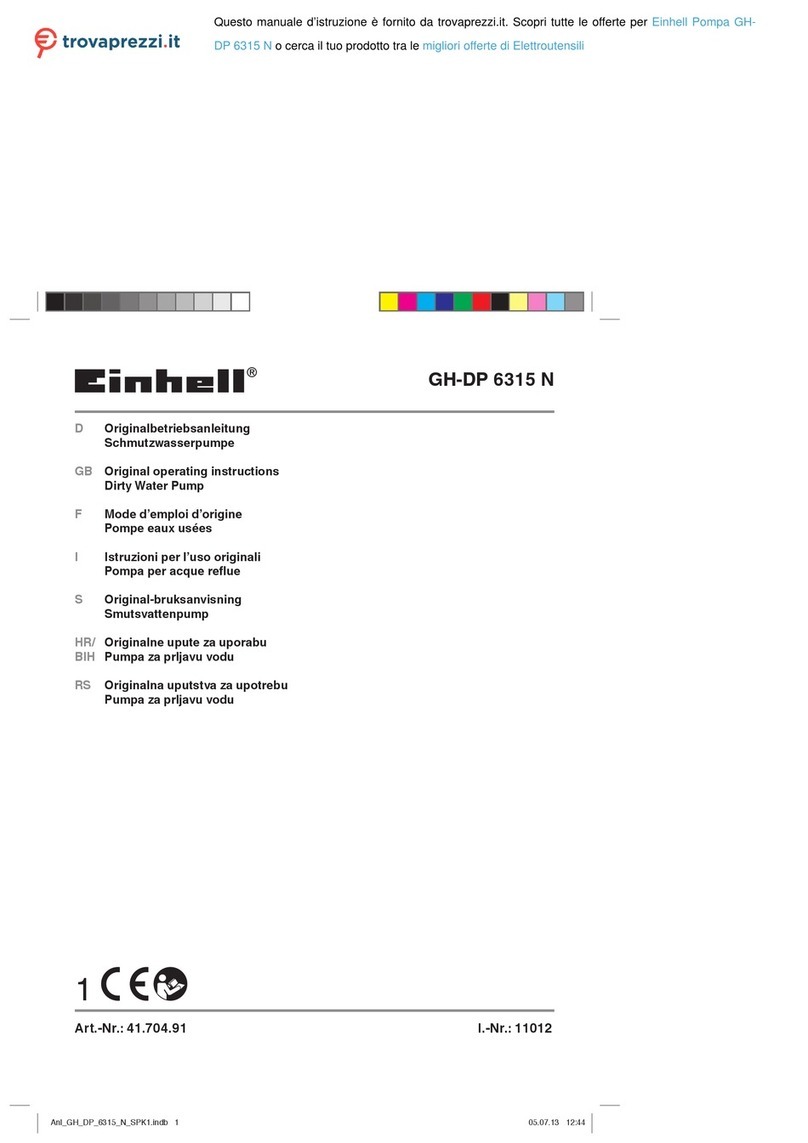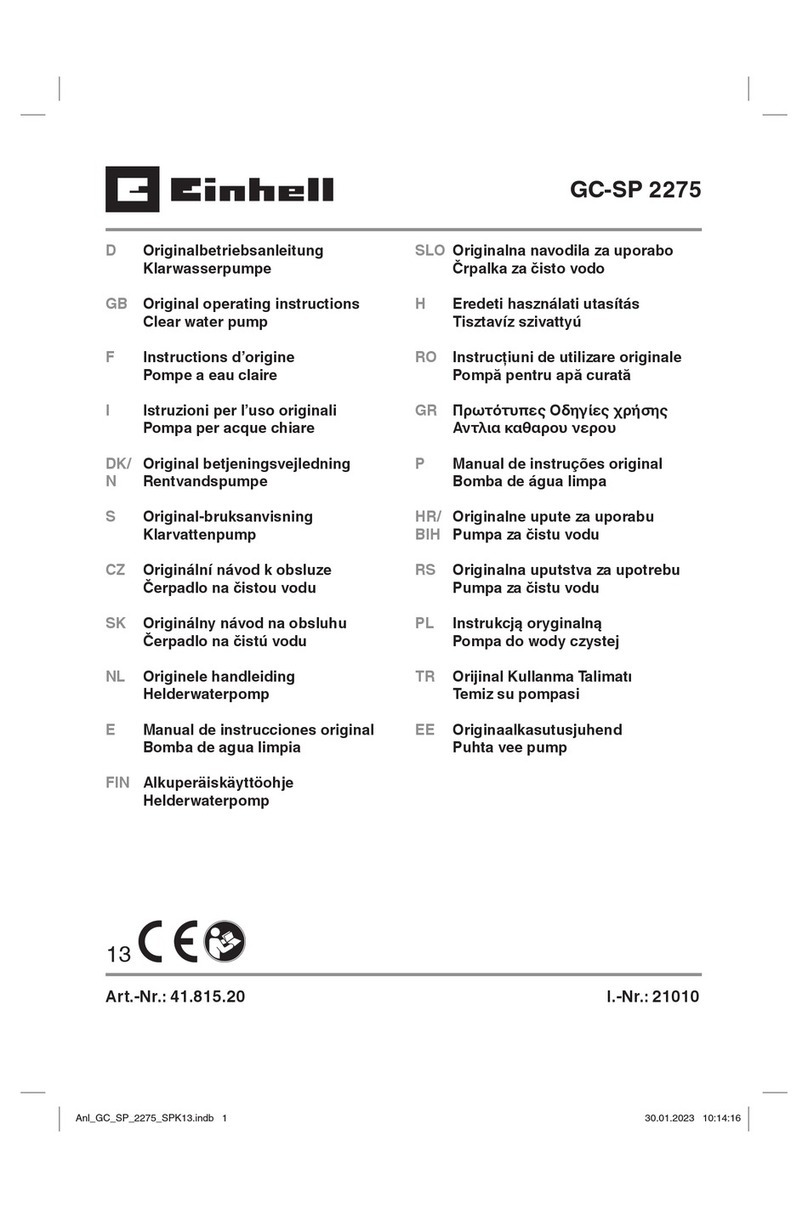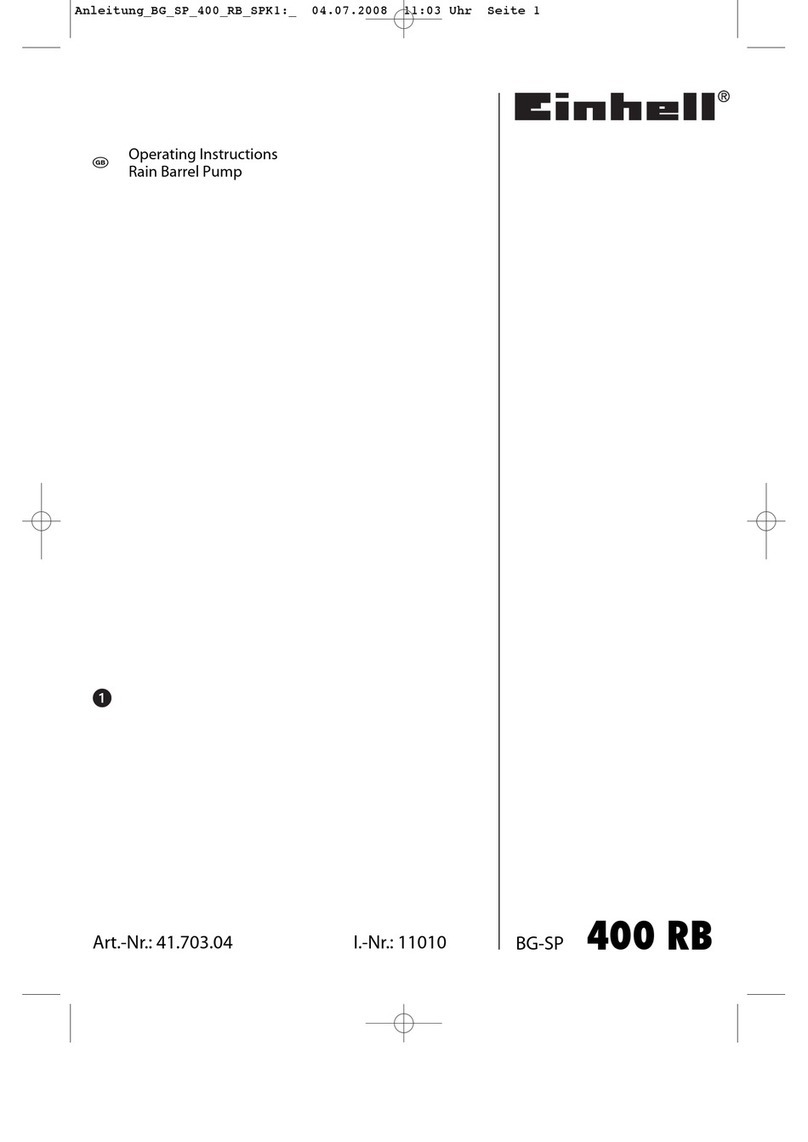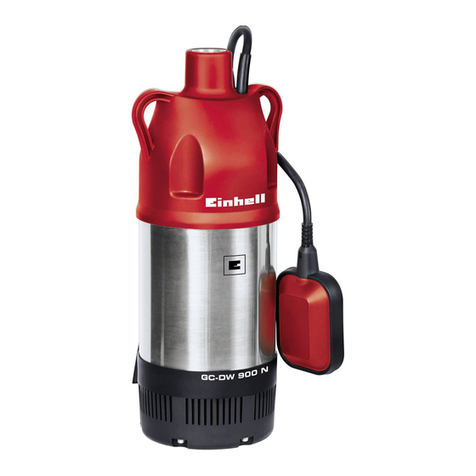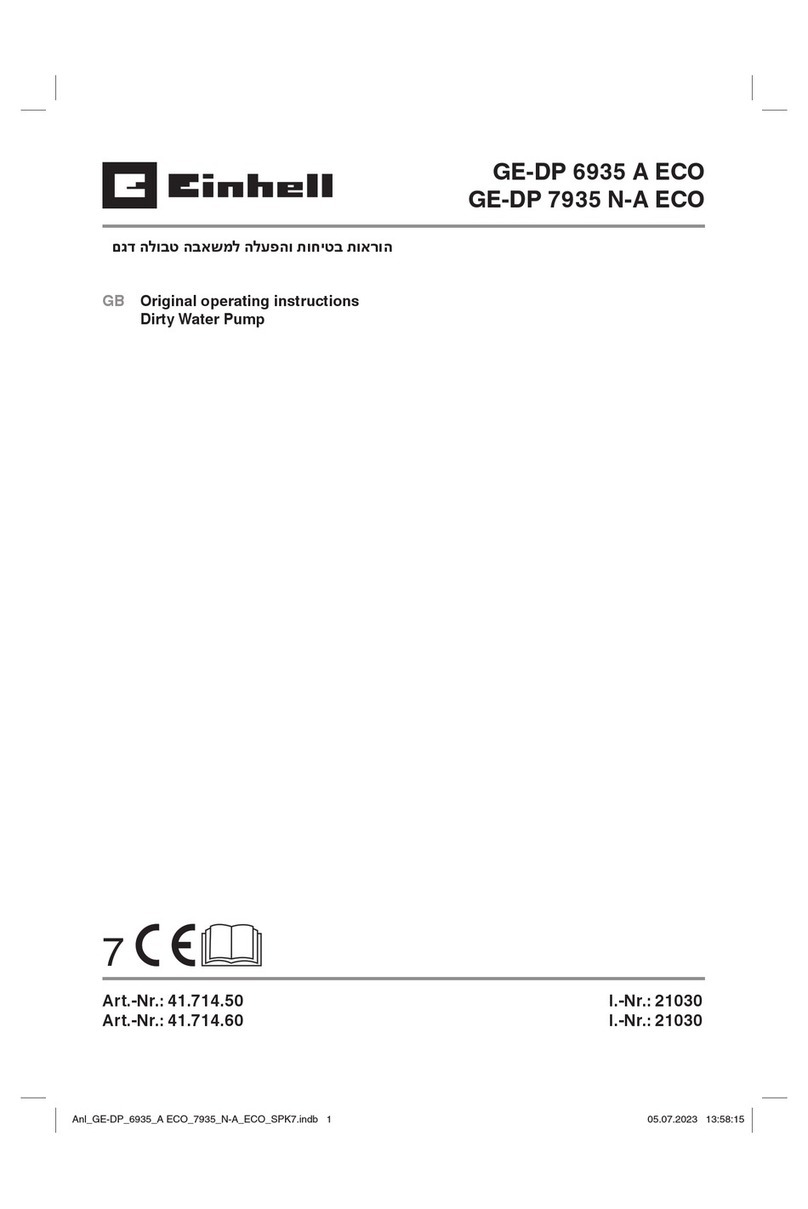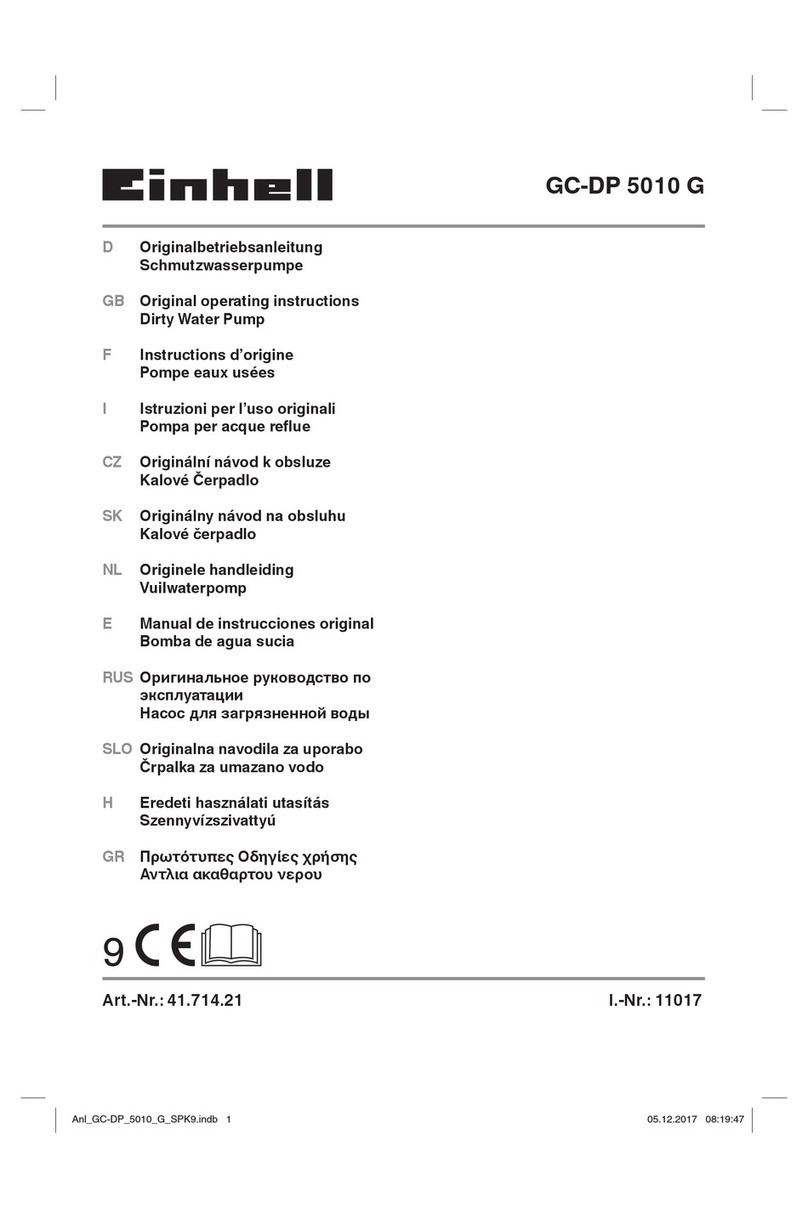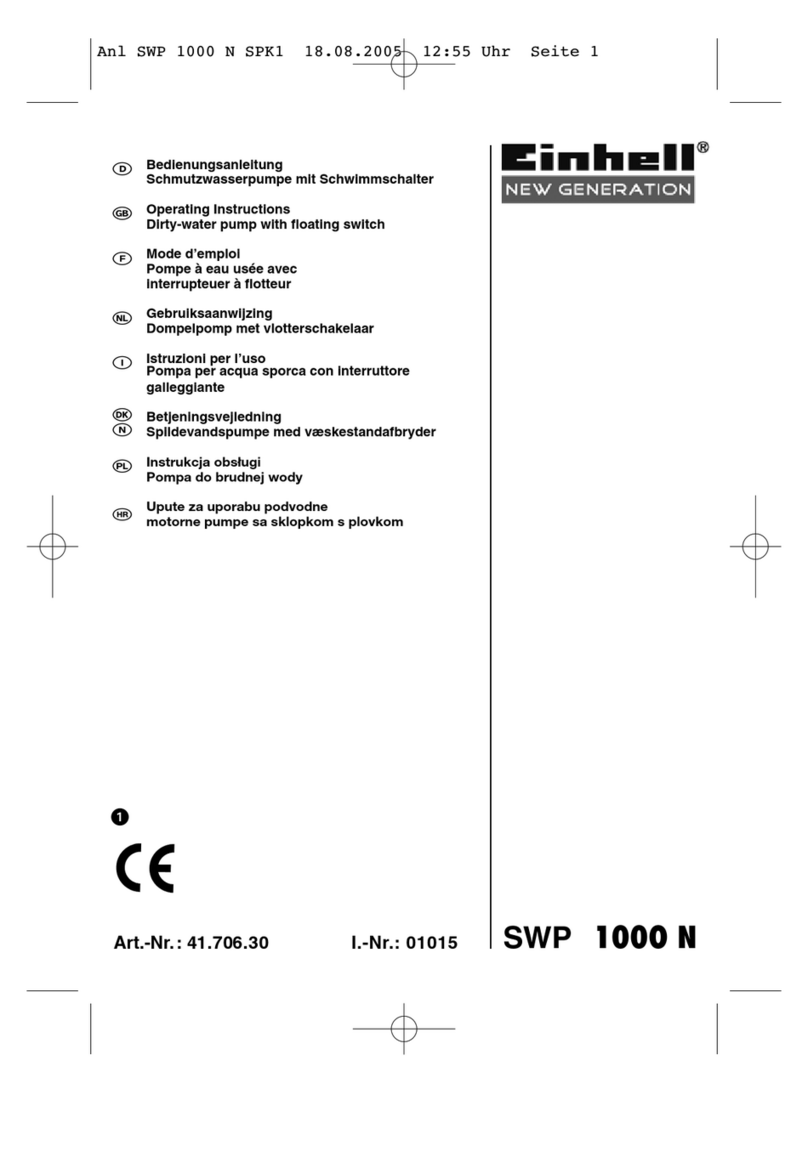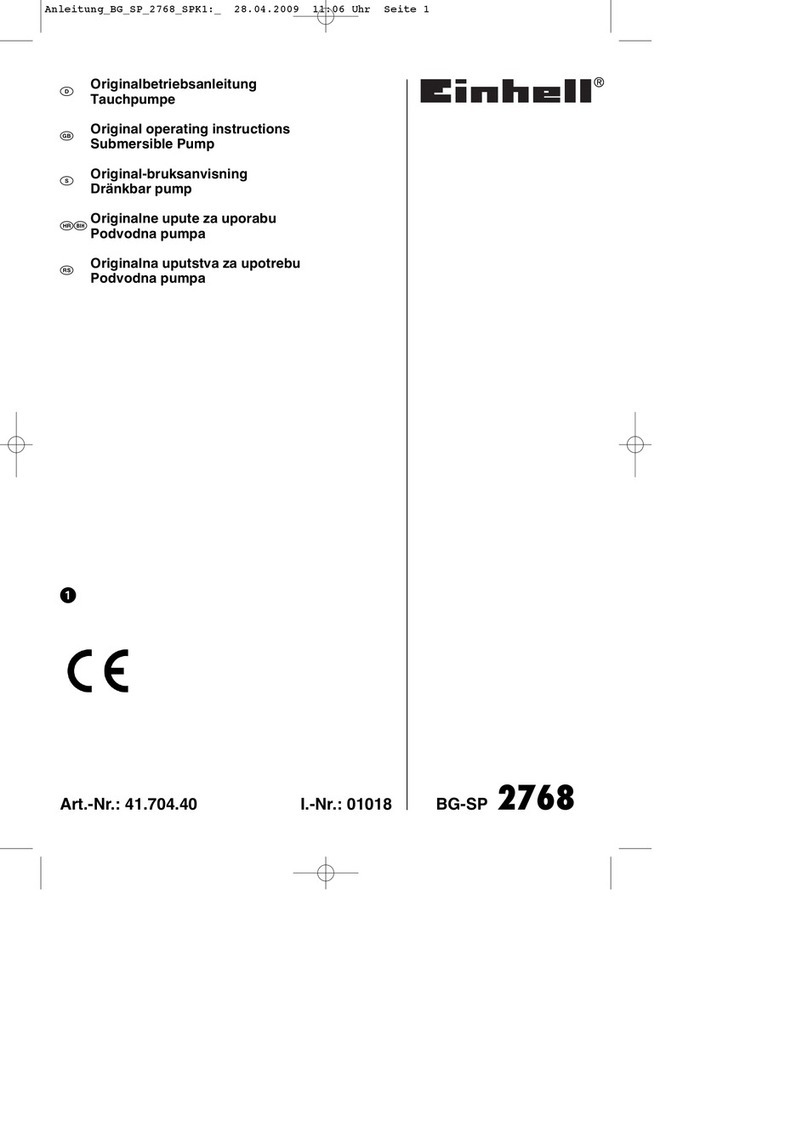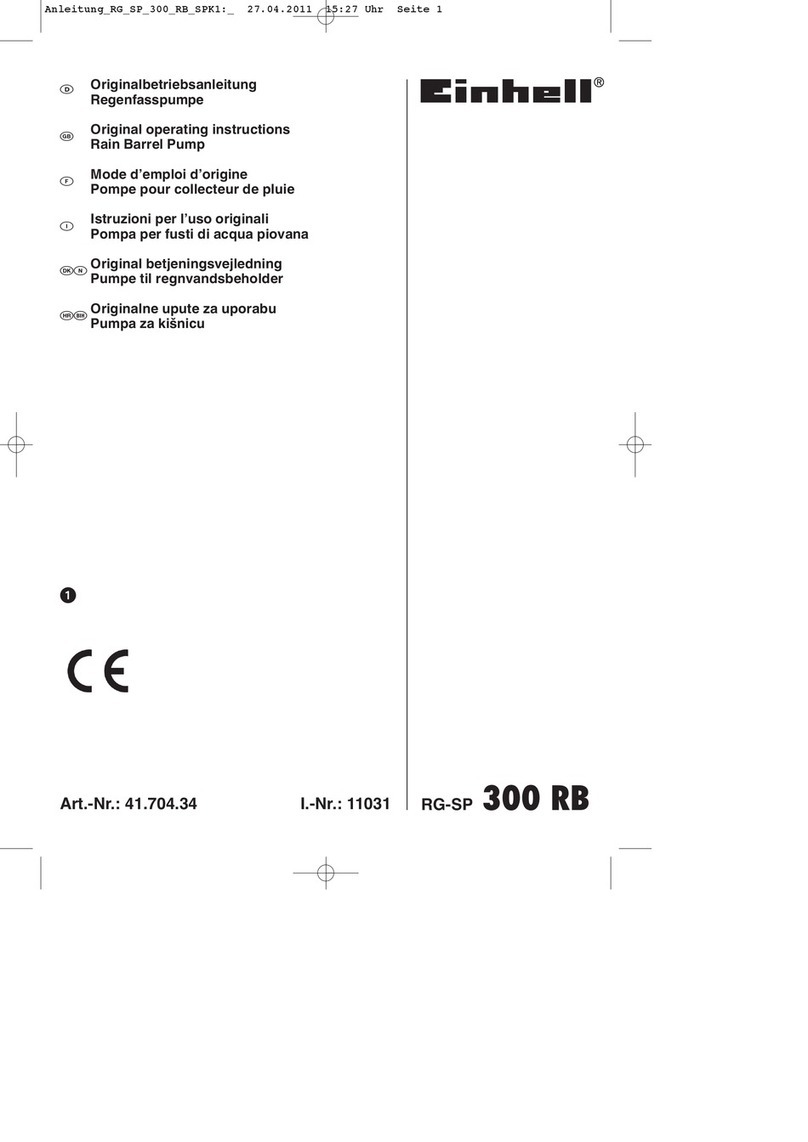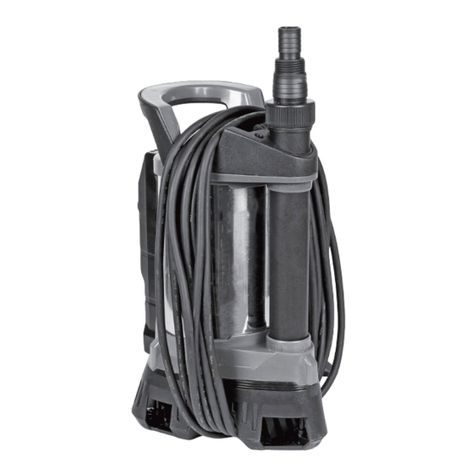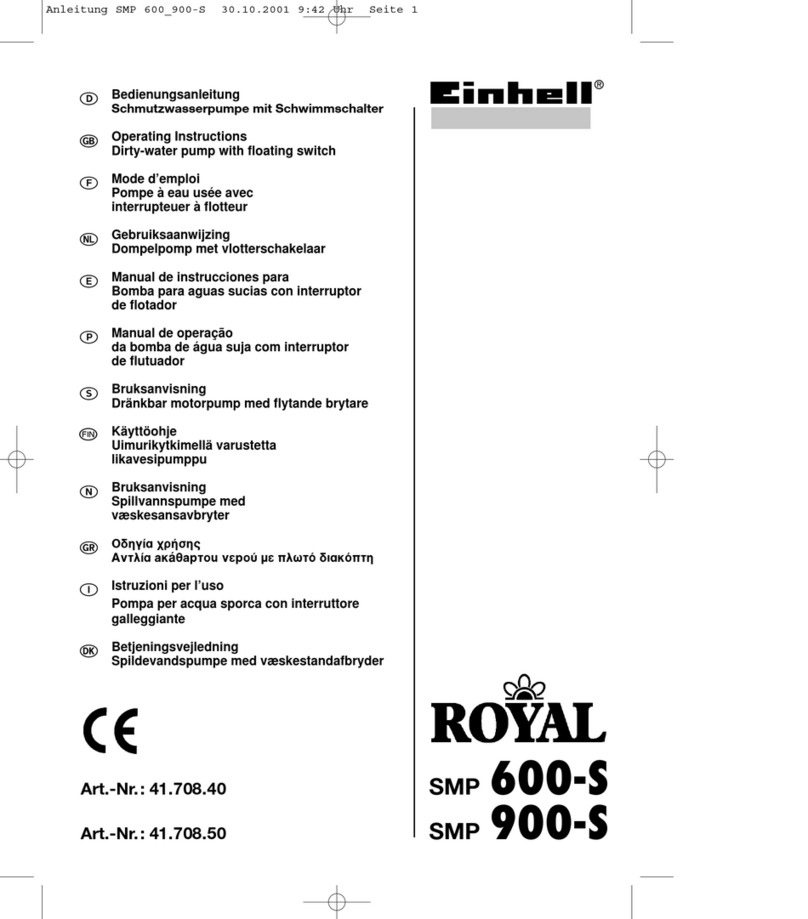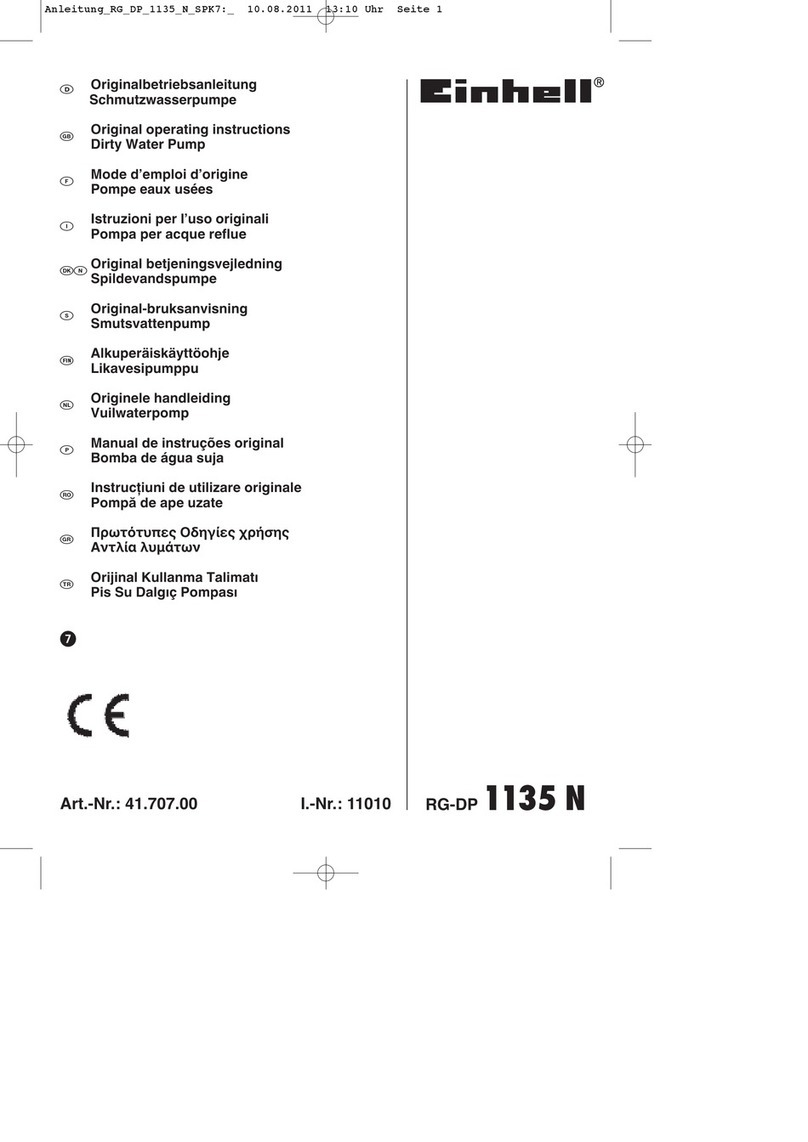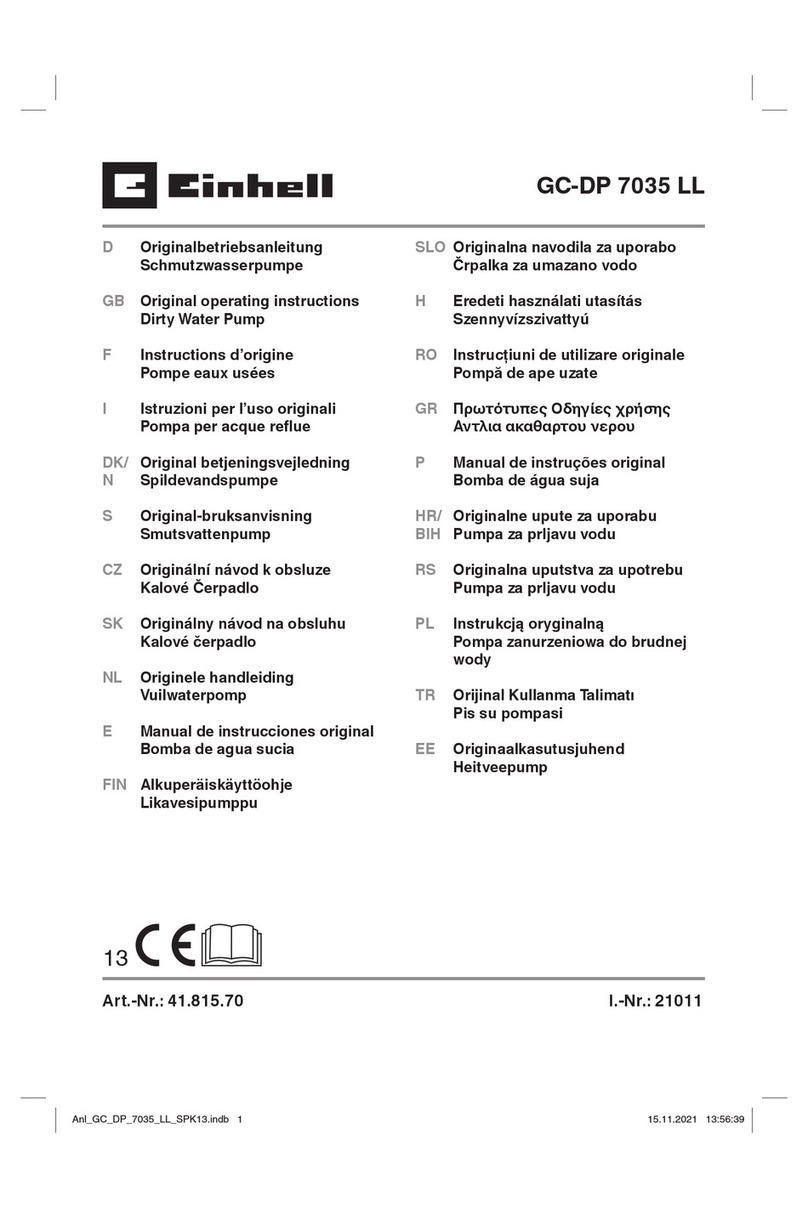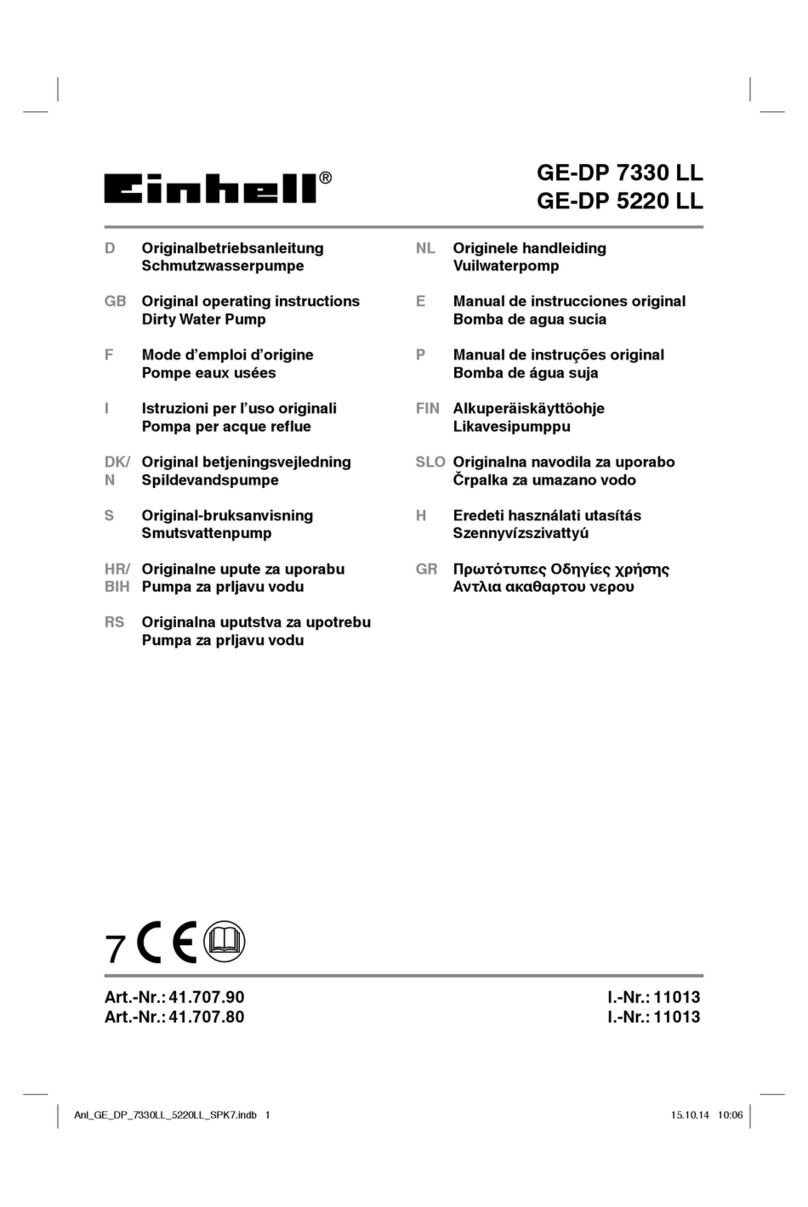10
D
nWird die Pumpe nach dem Einsatz wieder
entfernt, so muß bei erneutem Anschluß und
Inbetriebnahme unbedingt wieder Wasser
aufgefüllt werden.
6.3 Abstellen des Motors:
nEin-/ Ausschalter auf Stellung „OFF“ stellen.
nBenzinhahn schließen.
7. Reinigung, Wartung, Lagerung und
Ersatzteilbestellung
Ziehen Sie vor allen Reinigungs- und Wartungs-
arbeiten den Zündkerzenstecker.
7.1 Reinigung
nHalten Sie Schutzvorrichtungen, Luftschlitze und
Motorengehäuse so staub- und schmutzfrei wie
möglich. Reiben Sie das Gerät mit einem
sauberen Tuch ab oder blasen Sie es mit
Druckluft bei niedrigem Druck aus.
nWir empfehlen, dass Sie das Gerät direkt nach
jeder Benutzung reinigen.
nReinigen Sie das Gerät regelmäßig mit einem
feuchten Tuch und etwas Schmierseife.
Verwenden Sie keine Reinigungs- oder
Lösungsmittel; diese könnten die Kunststoffteile
des Gerätes angreifen. Achten Sie darauf, dass
kein Wasser in das Geräteinnere gelangen kann.
7.2 Wartung
Beachten Sie hierzu auch die beiliegenden Service-
Informationen
7.2.1 Ölwechsel
Der Motorölwechsel sollte bei betriebswarmen Motor
durchgeführt werden.
nNur Motorenöl (10W40) verwenden.
nGerät auf geeigneter Unterlage leicht schräg
gegen die Ölablasschraube (Bild 7/Pos. A)
abstellen.
nÖleinfüllschraube (Bild7/ Pos. B) öffnen.
nÖlablassschraube entfernen und warmes Motoröl
in geeigneten Behälter ablassen.
nNach vollständigem Entleeren Ölablassschraube
einschrauben und Gerät eben aufstellen.
nNeues Motoröl bis zur oberen Markierung des
Öleinfüllstabes einfüllen (Bild 8/Pos. H).
Achtung! Ölmessstab zum Prüfen des Ölstandes
nur einstecken. Nicht einschrauben!
Während des Betriebes muss sich der Ölstand
zwischen den beiden Markierungen „L“ und „H“ (Bild
8) befinden.
Das Altöl muss ordnungsgemäß entsorgt werden.
7.2.2 Luftfilter
Den Luftfilter regelmäßig reinigen, wenn nötig
ersetzen.
nLuftfilterabdeckung entfernen (Bild 9-10)
nFiltereinsatz entnehmen (Bild 11)
nLuftfilter durch Ausklopfen oder Ausblasen mit
Druckluft reinigen.
nDer Zusammenbau erfolgt in umgekehrter
Reihenfolge.
7.2.3 Zündkerze
Zündkerze regelmäßig reinigen, wenn nötig ersetzen.
Elektrodenabstand auf 0,6 mm einstellen.
nZündkerzenstecker mit einer Drehbewegung
abziehen (Bild 12)
nZündkerze mit Zündkerzenschlüssel entfernen
(Bild 13)
nZündkerze mit Kupferdrahtbürste reinigen bzw.
neue verwenden.
nDer Zusammenbau erfolgt in umgekehrter
Reihenfolge.
7.2.4 Kraftstofffilter
nKraftstoffleitung abziehen (Bild 14)
nKraftstoffilter aus Tank schrauben (Bild 15)
nKraftstofffilter mit Druckluft reinigen. Achten Sie
dabei darauf, den Filter nicht zu beschädigen.
nDer Zusammenbau erfolgt in umgekehrter
Reihenfolge.
7.3 Lagerung
nVor längerem Nichtgebrauch oder Überwinterung
die Pumpe gründlich mit Wasser durchspülen.
nBenzinhahn schließen und Motor laufen lassen
bis dieser stoppt, um den Vergaser zu entleeren.
nTank vollständig Füllen um Rostbildung zu
verhindern.
nEntleerungsschraube (Bild 1/Pos. 6) entfernen
und das Pumpengehäuse vollständig entleeren.
nDas Gerät an einem trocken Ort außerhalb der
Reichweite von Kindern lagern.
